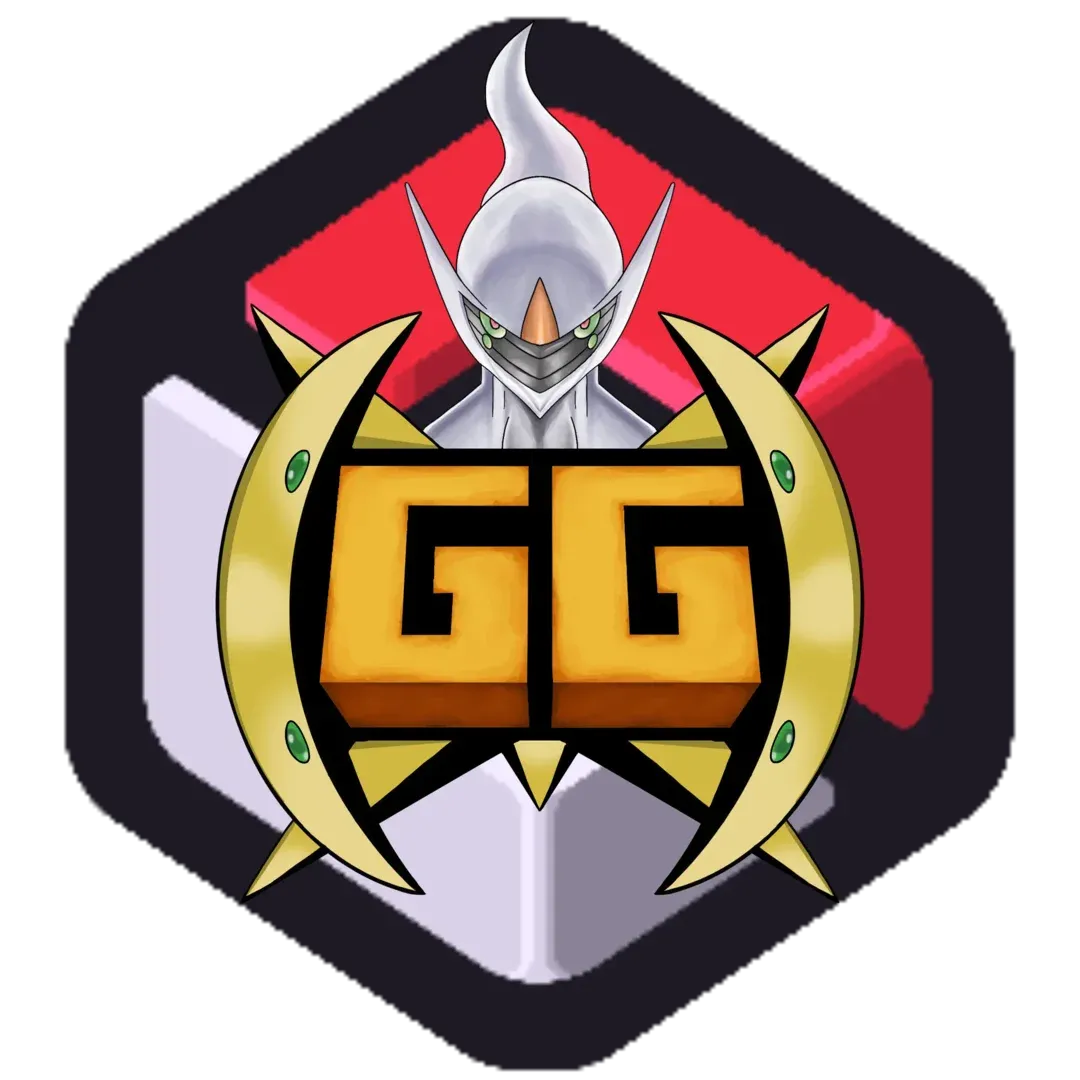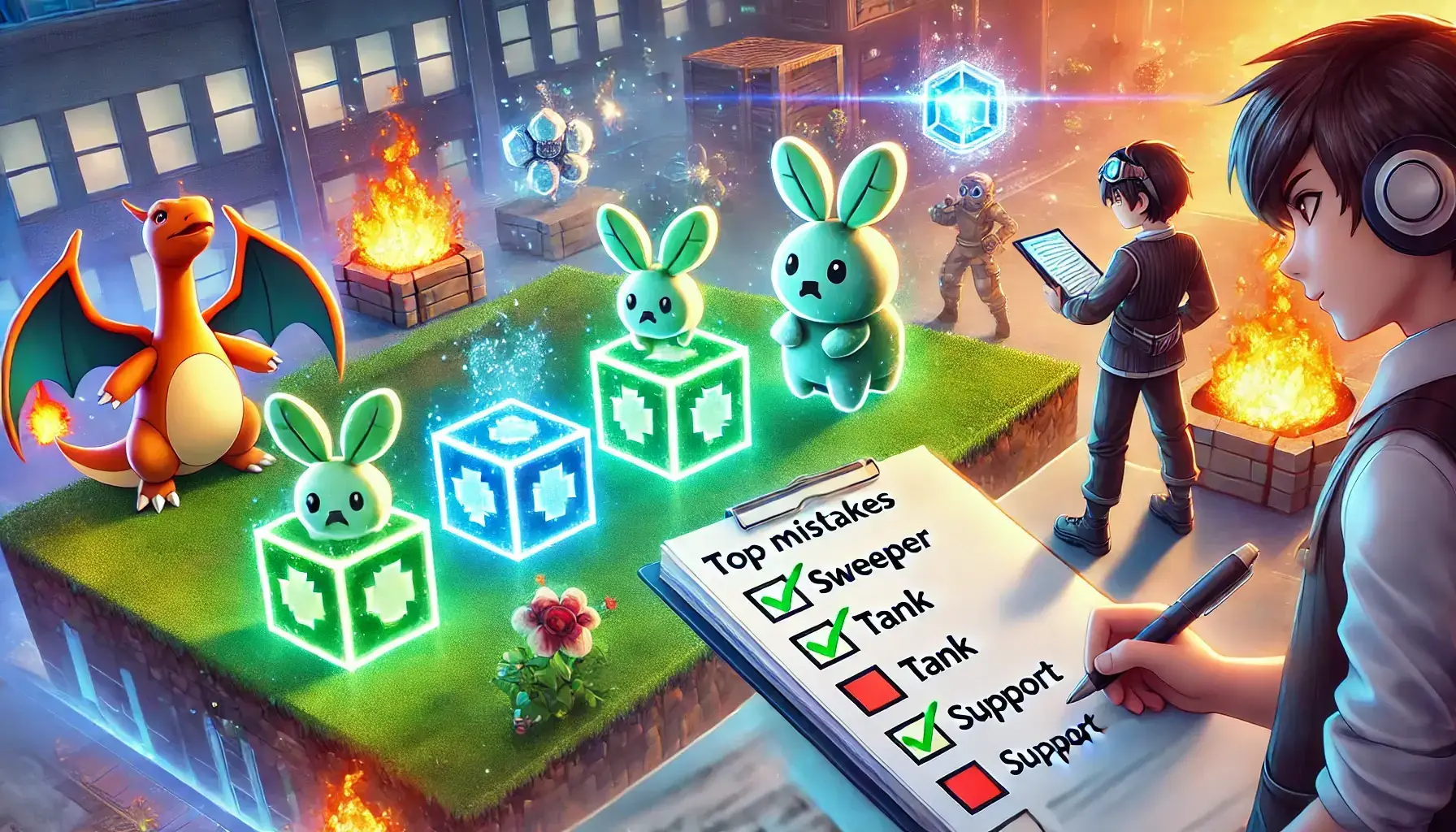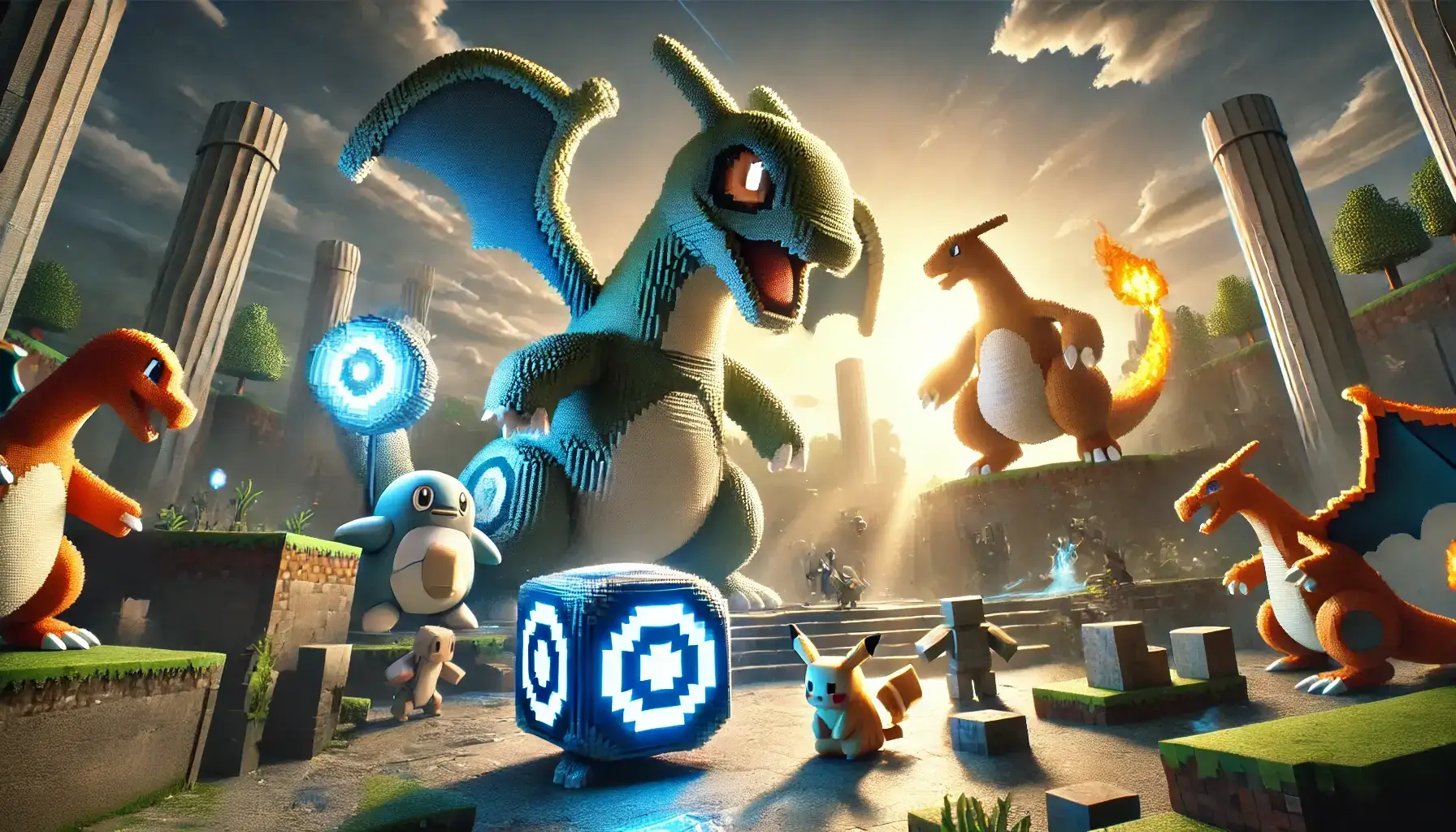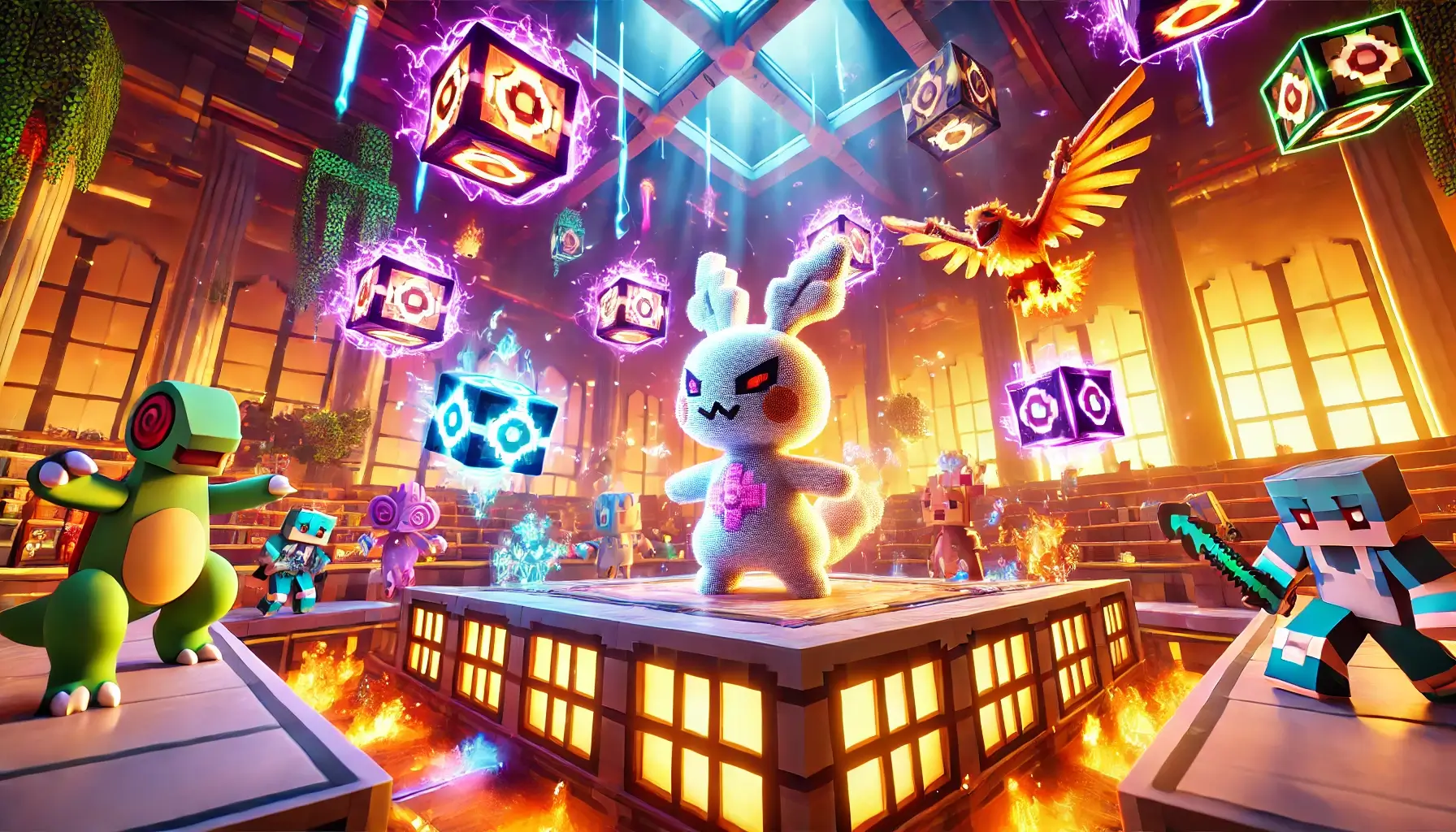Building a strong Cobblemon team is a strategic art, requiring careful consideration of roles, synergies, and counters. However, even experienced trainers can fall into common pitfalls that weaken their teams and limit their success in competitive battles. This guide highlights the most frequent mistakes to avoid and offers tips to ensure your team is battle-ready.
1. Over-relying on One Cobblemon
Why It’s a Problem:
Focusing too heavily on a single powerful Cobblemon can leave your team vulnerable if it gets countered or eliminated early.
Example:
- A team built around Dragonite may crumble if your opponent uses an Ice-type Cobblemon with priority moves or carries Stealth Rock.
How to Avoid:
- Spread roles across your team to ensure no single Cobblemon is indispensable.
- Include backup options for critical roles, such as a secondary sweeper or defensive pivot.
2. Ignoring Type Balance
Why It’s a Problem:
Cobblemon teams with overlapping weaknesses are easy to exploit. A lack of coverage also makes it harder to deal with specific threats.
Example:
- A team with three Water-types may struggle against Electric- or Grass-type Cobblemon.
How to Avoid:
- Build a team with diverse typings to cover as many strengths and weaknesses as possible.
- Use a type chart to ensure your team has answers for common threats.
3. Lack of Hazard Control
Why It’s a Problem:
Entry hazards like Stealth Rock, Spikes, and Toxic Spikes can chip away at your team, especially if you have multiple Cobblemon weak to hazards.
Example:
- A team with Volcarona and Charizard may lose significant health each time they switch in due to Stealth Rock.
How to Avoid:
- Include at least one Cobblemon with hazard removal moves like Defog or Rapid Spin.
- Consider using Heavy-Duty Boots on hazard-vulnerable Cobblemon to negate entry hazard damage.
4. Neglecting Speed Control
Why It’s a Problem:
A team without Speed control will struggle against faster opponents, allowing them to dictate the flow of battle.
Example:
- Facing a Choice Scarf Garchomp can sweep your team if you lack priority moves or Speed boosters.
How to Avoid:
- Include priority moves like Bullet Punch or Aqua Jet to handle faster threats.
- Use Speed-altering strategies such as Tailwind, Sticky Web, or Choice Scarf.
5. Overloading on Offense or Defense
Why It’s a Problem:
Teams that focus too much on one playstyle (e.g., hyper-offense or stall) are predictable and can be countered by balanced strategies.
Example:
- A team of all sweepers may crumble against bulky Cobblemon that can tank hits and retaliate.
How to Avoid:
- Build a balanced team with roles for offense, defense, and utility.
- Include Cobblemon that can pivot between roles, such as Rotom-Wash or Togekiss.
6. Not Considering Synergy
Why It’s a Problem:
Cobblemon that don’t synergize can clash in roles or fail to support each other, leading to inefficiencies.
Example:
- A team with two Cobblemon setting opposing weather conditions (e.g., Rain and Sandstorm) undermines itself.
How to Avoid:
- Build around a central strategy, such as weather teams, hazard stacking, or VoltTurn cores.
- Ensure Cobblemon have complementary abilities, moves, and typings.
7. Forgetting About Status Effects
Why It’s a Problem:
Teams without answers for status effects like Toxic, Burn, or Paralysis can be crippled by defensive or stall strategies.
Example:
- Facing a Toxic-stalling Toxapex without status-clearing moves or abilities can wear down your team.
How to Avoid:
- Include status-clearing moves like Heal Bell or Aromatherapy.
- Use items like Lum Berry or abilities like Guts to mitigate status effects.
8. Lack of a Game Plan
Why It’s a Problem:
Without a clear strategy, your team may struggle to adapt to different opponents and battle scenarios.
Example:
- A team with random Cobblemon thrown together will lack cohesion and fail to execute a consistent win condition.
How to Avoid:
- Plan your team around a primary strategy, such as a Sandstorm team with Excadrill or a Trick Room setup with slow Cobblemon.
- Test your team in practice matches to refine your approach.
9. Overlooking Common Threats
Why It’s a Problem:
Failing to prepare for meta-defining Cobblemon leaves your team vulnerable to common strategies.
Example:
- A team with no counter to Garchomp will struggle against its sweeping potential.
How to Avoid:
- Analyze the current meta and identify common threats.
- Include Cobblemon or moves specifically to counter popular choices.
10. Skipping Item Optimization
Why It’s a Problem:
Held items can significantly enhance a Cobblemon’s performance. Ignoring item optimization leaves potential on the table.
Example:
- Running Leftovers on a sweeper instead of a Life Orb or Choice Band reduces its offensive power.
How to Avoid:
- Match items to each Cobblemon’s role. For example:
- Use Leftovers or Rocky Helmet for defensive Cobblemon.
- Equip Choice Scarf, Choice Band, or Life Orb for sweepers.
- Use utility items like Heavy-Duty Boots or Assault Vest for specialized roles.
Checklist for a Competitive Cobblemon Team
- Type Coverage: Ensure your team can handle a wide range of typings.
- Hazard Control: Include hazard setters and removers.
- Role Distribution:
- One or two sweepers (physical and special).
- At least one defensive wall or pivot.
- Support or utility Cobblemon for status spreading or hazard control.
- Synergy: Build around complementary abilities, roles, and strategies.
- Meta Awareness: Include answers to common threats and popular strategies.
- Test and Refine: Practice your team in battles to identify weaknesses and improve performance.
Conclusion
Avoiding these common mistakes is essential for building a strong competitive Cobblemon team. By focusing on balance, synergy, and adaptability, you’ll create a team that can handle a variety of opponents and strategies. Keep experimenting, refining, and learning from battles to stay ahead of the competition.



